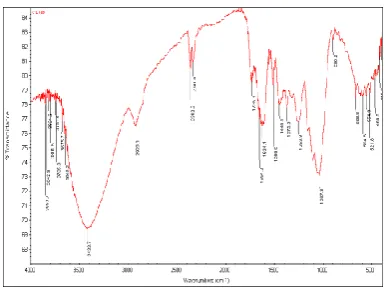Article
Chemical Modification Effect on the Mechanical
Properties of Coir Fiber
Samia S. Mir
*, Syed M. N. Hasan, Md. J. Hossain, and Mahbub Hasan
Department of Materials and Metallurgical Engineering, Bangladesh University of Engineering and Technology, Bangladesh
E-mail: mir1.samia@gmail.com*
Abstract. Coir fiber is derived from the husk of the coconut (Cocos nucifera). Coir has one
of the highest concentrations of lignin, which makes it stronger. In recent years, wide range of research has been carried out on fiber reinforced polymer composites. The aim of the present research is to characterize brown single coir fiber for manufacturing polymer composites reinforced with characterized fibers. Adhesion between the fiber and polymer is one of factors affecting the strength of manufactured composites. In order to increase the adhesion, the coir fiber was chemically treated separately in single stage (with Cr2(SO4)3•12(H2O)) and double stages (with CrSO4 and NaHCO3). Both the raw and
treated fibers were characterized by tensile testing, Fourier transform infrared (FTIR) spectroscopic analysis, scanning electron microscopic analysis. Tensile properties of chemically treated coir fiber was found higher than raw coir fiber, while the double stage treated coir fiber had better mechanical properties compared to the single stage treated coir fiber. Scanning electron micrographs showed rougher surface in case of the raw coir fiber. The surface was found clean and smooth in case of the treated coir fiber. Thus the performance of coir fiber composites in industrial application can be improved by chemical treatment.
Keywords: Coir natural fiber, chemical treatment, span length, tensile properties.
ENGINEERING JOURNAL Volume 16 Issue 2
Received 2 November 2011 Accepted 17 January 2012 Published 1 April 2012
1.
Introduction
Coir fiber composites have recently attracted a considerable attention in the composite materials research community as well as in industry. In recent years, wide range of research has been carried out on fiber reinforced polymer composites [1-10]. This is due to a range of potential advantages of coir fibers, such as low specific weight, producible with low investment at low cost, friendly processing, good thermal and acoustic insulating properties. The main constituents of coir fiber are 5.25% water soluble, 3.00% pectin and related compounds, 0.25% hemicellulose, 45.84% lignin, 43.44% cellulose and 2.22% ash. The main objectives of the current work are to characterize raw and chemically treated coir fibers and determine their tensile properties. Chemical treatments of two types were performed. Basic chromium sulfate solution treatment (pH 2.5-3); performed by a 3 hours shaking the coir fibers in 4% CrSO4 solution .The second
treatment was performed by continuation of the basic CrSO4 treatment by addition of 0.02 %NaHCO3
solution and another 2 hours shaking. In CrSO4 treatment, process fibers were in pickled state at pH 3 or
lower. At this low pH affinity of Cr for coir fiber’s cellulose was moderate, allowing penetration of chrome into fiber. After proper penetration, absorption was achieved and pH was raised. This brings about change in both Cr salts and fiber and causes a reaction between them. This process involves several simultaneous competing reactions.
2.
Experimental
2.1. Chemical treatment of coir fiber
The Coir fibers were initially collected and cleaned. For single stage treatment, a solution of 0.5% chromium sulfate with 2/3 drops of HCl was prepared. An initial pH of 2.5-3 was maintained (during reaction this pH became 8-9). Coir fiber was taken into the prepared solution and shaken for 3 hours. After 3 hours reaction the fiber is washed properly in distilled water. For two stages CrSO4 and NaHCO3
treatment, the same procedure was followed with an addition of 0.02% NaHCO3 solution. The solution
along with coir fiber was shaken for another 2 hours. Later the fiber was washed properly with distilled water.
2.2. Tensile testing
Tensile testing was performed for the span length of 5mm, 15mm, 25mm and 35mm using a tensile testing machine. The fibers were glued in between two paper frame (Fig. 1) to conform a good gripping and straight direction to the test clamps. Diameter of single fiber was measured using a scanning electron microscope (SEM). The paper frame was carefully placed in between the jaws of the load cell. The load cell and cross-head speed used were 50N and 4mm/min respectively.
[image:2.595.212.386.549.666.2]
2.4. FTIR spectroscopy
The infrared spectra of coir fiber were recorded on a Nicolet 380 spectrophotometer with co-addition of 32 scans. The infrared spectra of raw fiber were measured by scratching a fiber with a knife and collecting some powdered sample. Then potassium bromide (KBr), which acts as a reagent, was mixed (at a ratio KBr: Sample = 100:1) with them in a mortar pestle. The mixture was then taken in a dice of specific dimensions. The pellet was formed by pressing with a hand press machine and was placed on the sample holder. The IR spectrum obtained in this study is presented in the result and discussion section.
3.
Results and Discussion
3.1. Tensile properties of coir fiber
Coir fiber was characterized by evaluating the effect of variation of span length on tensile properties. The Young’s modulus, strain to failure and tensile strength were measured for span length of 5mm, 15mm, 25mm and 35 mm with the help of stress/ strain curves (Fig. 2 and Fig. 3).
Fig. 2. Stress vs. strain curve (5 mm span length) for basicCr2(SO4)3 treated coir fiber of 11 samples.
Fig. 3. Stress vs. strain curve (5 mm span length) for basicCr2(SO4)3 and NaHCO3treated coir fiber of 8
samples.
Correction of Tensile Properties:
Corrected E-modulus and Strain to Failure can be calculated by the following steps [11] 1) α i = ∆L total / F - L0 / E0. Ai
2) ∆L total / F = ε. L 0 / σ. Ai = 1 / E. L0 / Ai 3) Strain correction-
a) ∆L grip / Lo = α l (A i . σ) / Lo
b) ∆L fiber / Lo (Corrected) = (∆L Total / L o - ∆L grip / Lo)
[image:3.595.192.402.290.403.2] [image:3.595.194.402.449.567.2]For both single stage treatment and double stage treatment, the corrected and uncorrected curves (1/span vs. the Young’s modulus, tensile strength and strain to failure) for the span length of 5 mm, 15 mm, 25 mm and 35 mm are shown in Fig. 4 to 13 respectively, while the same properties for raw, single stage (basic CrSO4 treated) and double stage (basic CrSO4 and NaHCO3) chemically treated coir fiber are shown
in Tables 1 to 3 respectively.
The corrected Young’s modulus values are plotted against the span length and are shown in Fig. 5 for single stage chemical treatment and in Fig. 9 for double stage chemical treatment. The corrected Young’s module values found were almost constant with variation of span length.
Fig. 4. Young’s modulus vs. 1/span (uncorrected).
Fig. 5. Young’s modulus vs. 1/span (corrected).
[image:4.595.188.407.188.323.2] [image:4.595.199.396.370.516.2] [image:4.595.193.404.564.690.2]
Fig. 7. Strain to failure vs. span length.
It seems that with an increase in span length, the Young’s modulus increased. On the other hand, the tensile strength and strain to failure decreased with an increase in span length [12]. As mentioned by Bledski and Gassan, the longer the stressed distance of the natural fiber, the more inhomogenities will be in the stressed fiber segment, weakening the structure [11]. Thus the strength decreased with clamping length. For the fiber modulus, however, the situation is reverse. As no extensometer can be used in current set-up and machine displacement is used for the modulus determination, at longer gauge lengths, the relative effect of slippage in the clamps will be smaller.
Table 1. Tensile properties for raw coir fiber.
Span Length (mm) Young’s Modulus (GPa) Corrected Young’s Modulus (GPa) Tensile Strength (MPa) Strain to Failure (%)
5 3.69 4.36 50.4 5.1 15 6.52 4.42 48.1 2.3 25 6.87 4.45 40.92 2.21 35 8.33 4.48 37.5 2.03
Table 2. Tensile properties for CrSO4 treated coir fiber.
Span
Length Modulus Young’s (GPa) Corrected Young’s Modulus (GPa) Tensile Strength (MPa) Strain to Failure (%)
5 3.83 6.48 84.8 3.73 15 6.93 6.54 77.2 2.70 25 7.15 6.56 73.51 1.41 35 8.45 6.63 67.6 1.19
[image:5.595.194.403.76.204.2] [image:5.595.164.411.390.497.2] [image:5.595.176.420.547.648.2]Fig. 8. Young’s modulus vs. 1/span (uncorrected).
Fig. 9. Young’s modulus vs. 1/span (corrected).
Fig. 10. Tensile strength vs. span length.
Fig. 11. Strain to failure vs. span length.
[image:6.595.201.394.228.324.2] [image:6.595.215.382.369.474.2] [image:6.595.207.389.519.608.2]Table 3. Tensile properties for basic CrSO4 and NaHCO3 treated coir fiber. Span Length (mm) Young’s Modulus (GPa) Corrected Young’s modulus (GPa) Tensile Strength (MPa) Strain to Failure (%)
5 4.83 7.79 91.6 6.62 15 7.11 8.05 80.97 2.18 25 7.85 8.14 76.46 1.80 35 9.11 8.24 70.88 1.23
It is found from Tables 1 to 3 that the double stage treated coir fiber had better properties compared to the single stage treated and raw coir fibers. After a total of 5 hours treatment, the corrected Young’s modulus of coir fiber was higher compared to the same of single stege treated coir fiber and was almost twice as much as the Young’s modulus of the raw fiber. A thin coating layer was forrmed on the fiber surface after single stage chemical reaction between basic CrSO4 and fiber. Again after double stage
chemical treatment, an even thicker coating was formed on the fiber surface due to chemical reaction between basic CrSO4 and NaHCO3 and fiber.
The chemical reactions between cellulose of coir fiber and basic CrSO4 and NaHCO3 are shown in Fig.
10. The stages of CrSO4 cross linking reactions are as follows:
a) The chrome complexes have reacted with the fiber cellulose carboxyl groups.
b) As pH of the solution is increased, sulfate associated with the chromium becomes displaced by the hydroxyl groups.
c) The hydroxyl groups become shared by chromium atoms.
The activity of chromium still remained incomplete after the single stage chemical treatment; as a result the tensile properties increased less over the raw coir fiber. However after the double stage treatment chromium became fully occupied in reducing hydroxyl groups, which in turn increased the tensile properties of coir fiber compared to both raw and single stage treated coir fibers (Fig. 12). The Shaking time is very important. The reaction rate accelerates during shaking. Shaking in solution also cleans the fiber surface.
Fig. 12. Chemical reaction between cellulose of coir fiber and basic CrSO4 and NaHCO3.
3.2. Surface morphology of raw and treated coir fiber
[image:7.595.176.421.106.207.2] [image:7.595.164.447.472.686.2]respectively. It is observed that double stage chemical treated coir fiber had smoother and compact structure compared to the raw and single stage chemical treated coir fiber. Raw coir fiber had rough and porous surface compared to chemical treated fibers. Single stage chemical treatment provided a thin smooth layer on fiber surface, while the double chemical treatment provided an ever thicker and smoother coating on the coir fiber surface. As a result double stage chemical treated coir fiber had larger diameter compared to the single chemical treated coir fiber.
Fig. 13. SEM image of raw coir fiber.
Fig. 14. SEM image of single stage chemical treated coir fiber.
Fig. 15. SEM image of double stage chemical treated coir fiber.
3.3. FTIR spectroscopic analysis of coir fiber
[image:8.595.209.388.165.257.2] [image:8.595.211.388.302.396.2] [image:8.595.207.390.441.538.2].
Fig. 16. FTIR spectrum of raw coir fiber.
Table 4. FT-IR spectral data of raw coir fiber [13, 17].
Position / cm Possible Assignment
~3600-3200 ν (OH) broad, strong band from the cellulose, hemicellulose and lignin of coir ~3000-2900 ν (C-H) in aromatic rings and alkanes
~1732.7 ν (C=O) most probably from the lignin and hemicelluloses ~1608.5 ν (C=C) aromatic in-plane
~1512.6 ν (C=C) aromatic skeletal ring vibration due to lignin ~1464.2 δ (C-H); δ (C-OH) 10 & 20 alcohol
~1426.6 δ (C-H) ~1375.4 δ (C-H)
~1267.4 δ (C-OH) out-of-plane ~1046.0 ν (C-OH) 20 alcohol
~898.5 ν (C-O-C) in plane symmetric
Fig. 17. FTIR spectrum of basic CrSO4 treated coir fiber.
Sharp peak was found for OH stretching vibration with 3421.3 cm-1 wave number (Fig. 16) in raw coir
[image:9.595.195.398.74.230.2] [image:9.595.88.508.309.475.2] [image:9.595.177.418.491.638.2]Fig. 18. FTIR spectrum of basic CrSO4 andNaHCO3 treated coir fiber.
In double stage treatment basic CrSO4 andNaHCO3 treated coir fiber OH stretching vibration was
found with 3422.7 cm-1 wave number (Fig. 18).
4.
Conclusion
The Young’s modulus of raw treated coir fiber increased with increase in span length, while the tensile strength and strain to failure of the same decreased with increase in span length. The surface of raw coir fiber was a bit rough and porous; while the surface of double stage chemical treated coir fiber was found compact and smoother. Chemical treatment improves the tensile properties of coir fiber. Double stage chemical treatment showed better properties compared to the single stage chemical treatment. During single stage treatment basic CrSO4 reacts with fiber cellulose, so a thin layer formed on fiber surface which make it smooth and compact. In double stage treatment after 3 hours treatment with basic CrSO4 again NaHCO3 is added and another reaction takes place during 2 hours shaking. Here two chemical agents basic (CrSO4 again NaHCO3) react with the fiber cellulose, so that a thick and smoother layer is formed on fiber surface. Clearly it can say that both treatments improve the surface morphology but the double stage treatment provides the better then single stage treatment. However, both treatments improve the chemical bonding of coir fiber which results good mechanical properties then the raw fiber. In these two treatments the shaking time is very important to improve the reaction rate. Shaking provides the full reaction of fiber with chemical reagent and cleans the fiber surface.
Acknowledgement
The authors wouldlike to thank Bangladesh University of Engineering and Technology (BUET), Dhaka, Bangladesh for their financial support during present research.
References
[1] B. C. Mitra, R. K. Basak, and M. Sarkar, “Studies on jute-reinforced composites, its limitation, and some solutions through chemical modification of fibres,” J. App. Poly. Sci., vol. 67, no. 6, pp. 1093-1100, 1998.
[2] A. N. Netravali, “Ramie fiber reinforced natural plastics,” Nat. Fib. Plas. Comp., pp. 321-343, 2004. [3] A. Kelly, “Composite material,” J. Cer. Proc. Res., vol. 2, no. 2, pp 147-154, 2004.
[image:10.595.201.396.76.221.2][7] E. M. F. Aquino, L. P. S. Sarmento, and W. Oliveira, “Moisture effect on degradation of jute/glass hybrid composites,” Rein. Plas. Comp., vol. 26, no. 2, pp. 219-233, 2007.
[8] M. T. Moe, “Effects of environmental aging on the mechanical properties of bamboo-glass fiber reinforced polymer matrix hybrid composites,” Comp. A, vol. 33, pp. 43-52, 2002.
[9] Y. Seena, “A comparison of the mechanical properties of phenol formaldehyde composites reinforced with banana fibers and glass fibers,” Comp. Sci. Tech., vol. 62, pp. 1857-1868, 2002.
[10] G. Kalaprasad and J. Kuruvilla, “Influence of short glass fiber addition on the mechanical properties of sisal reinforced low density polyethylene composites,” J. Comp. Mat., vol. 31, no. 5, pp. 509-527, 1997.
[11] K. Bledzki and J. Gassan, “Composites reinforced with cellulose based fibers,” Progress in Polymer Science, vol. 24, pp. 221-274, 1999.
[12] S. Biswas, Q. Ahsan, I. Verpoest, and M. Hasan, “Effect of span length on the tensile properties of natural fibers,”Advanced Materials Research, vol. 264-265, pp. 445-450, 2011.
[13] R. M. Silverstein and G. C. Bassler, Spectroscopic Identification of Organic Compounds, 2nd ed. New York: John Wiley and Sons, Inc.
[14] M. N. Haque, H. P. S. A. Khalil, and C. A. S. Hill. “Chemical modification of wood flour and thermo mechanical pulp fiber with acetic anhydride,” Journal of the Timber Development Association of India, vol. 54, no. 3, pp. 25–33.
[15] P. Garside and P. Wyettt. (2005, Jan.). Identification of cellulosic fibers by FTIR spectroscopy I: thread and single fiber analysis by attenuated total reflectance. Studies in Conservation. [Online]. 48(4), pp. 269-275. Available: http://eprints.soton.ac.uk/14069/
[16] X. H. Li, Y. Z. Meng, S. J. Wang, A. V. Rajulu, and S. C. Tjong, “Completely biodegradable composites of poly(propylene carbonate) and short, lignocelluloses fiber Hildegardia populifolia,”
Journal of Polymer Science, Part B: Polymer Physics, vol. 42, no. 4, pp. 666-675, 2004.
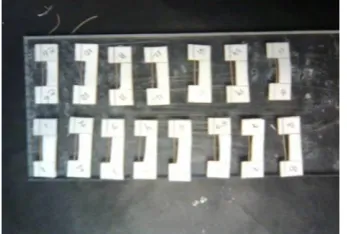
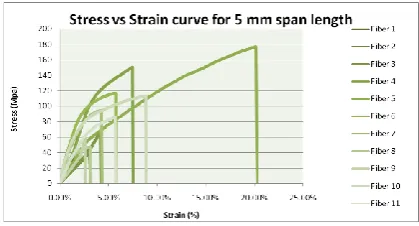
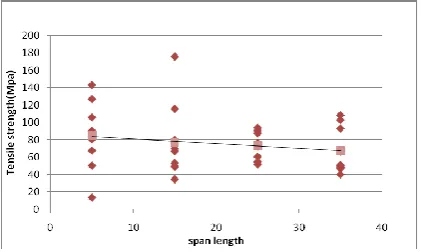
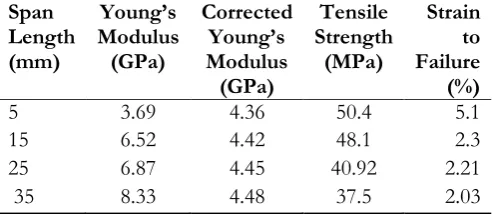
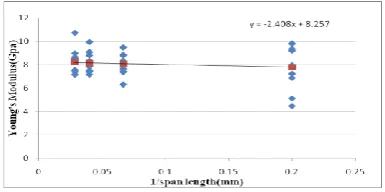
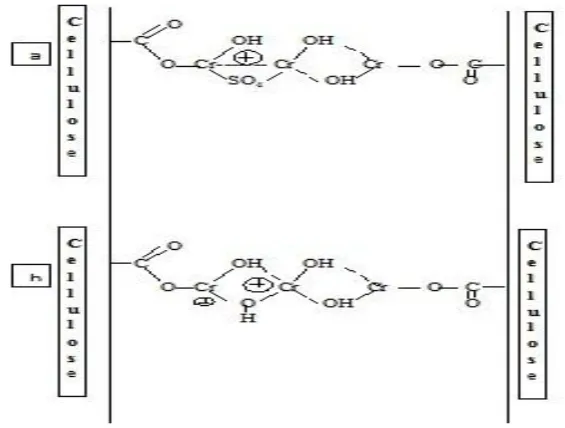
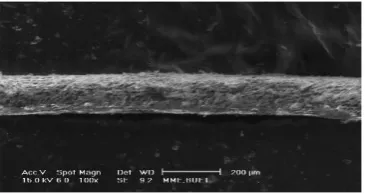
![Table 4. FT-IR spectral data of raw coir fiber [13, 17].](https://thumb-us.123doks.com/thumbv2/123dok_us/8110513.236212/9.595.88.508.309.475/table-ft-ir-spectral-data-raw-coir-fiber.webp)
